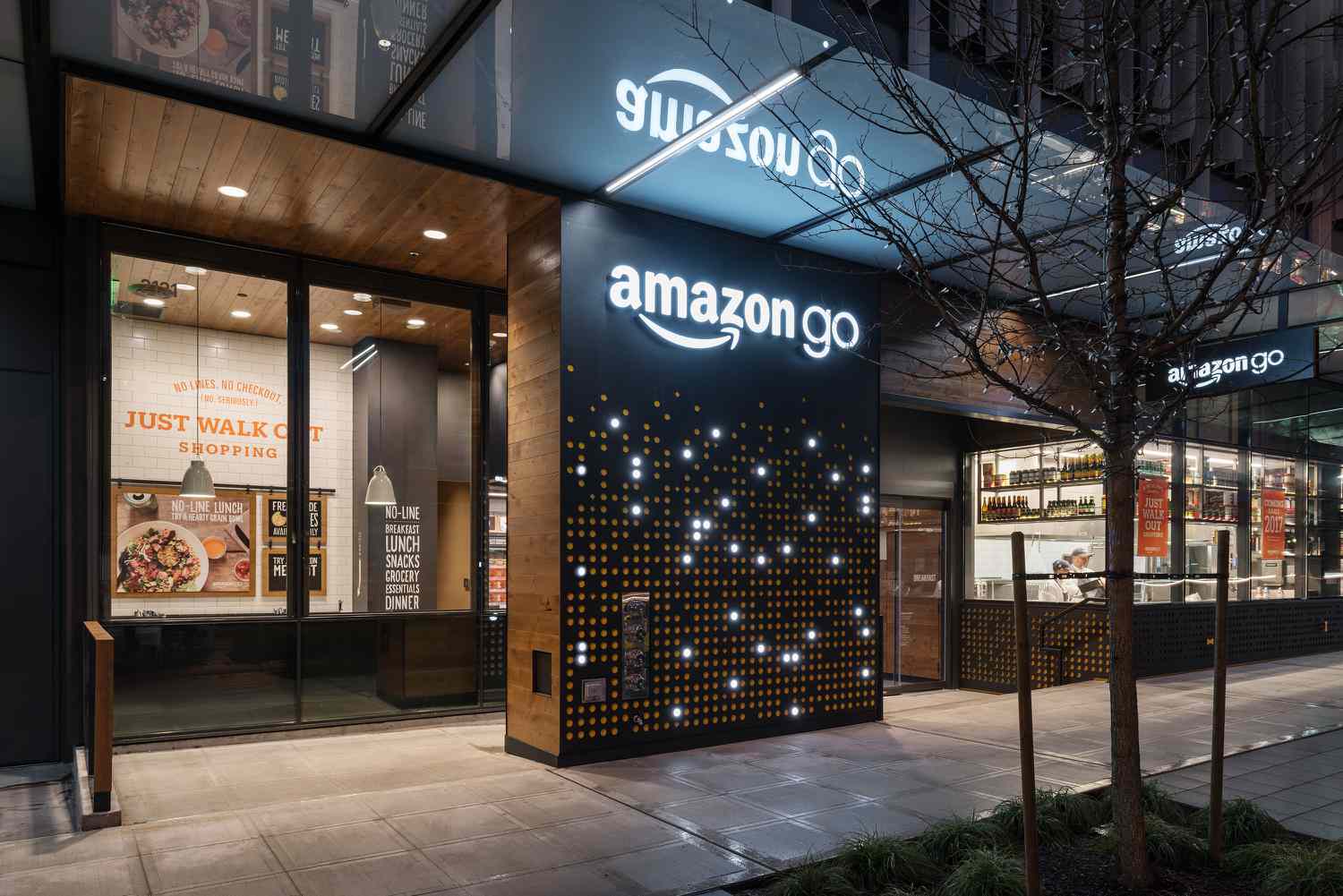Its new stores meet the challenge of the International Living Future Institute.
Updated November 3, 2022 04:09PM EDT
Amazon Go is a convenience store without a person behind the counter. You sign in with your phone when you arrive and then can just walk out the door with your stuff. It’s all done with the magic of “a combination of computer vision, sensor fusion, and deep learning.” (Consumers can also pay through the Amazon Shopping app, Amazon One, or a credit card.)
Treehugger is not the place to discuss the merits of stores without many humans doing checkout or Amazon’s deep learning of our habits and purchases. But we can talk about their goal of getting a zero carbon certification from the International Living Future Institute (ILFI). The ILFI standards are among the toughest in the industry and it is to Amazon’s great credit that it is aiming for this as part of its climate pledge—there are easier ways to burnish one’s green cred.
The reason I write “aiming for” is because the certification isn’t based on ambitions but on proof. According to the certification overview, “Projects must demonstrate actual net zero carbon operations based on a twelve-month performance period, during which time the project must be occupied consistently with its stated use.”
Operational carbon is defined as “the greenhouse gas emissions associated with the operational energy use of a building” and “this includes all carbon from energy required to heat and power the building, including but not limited to lighting, plug loads, heating and cooling, and cooking.” The project has to reduce the energy use intensity—the energy used per unit area—by 25%.
One hundred percent of the operational energy use associated with a project must be offset by new on- or off-site renewable energy. That’s not buying offsets like trees; it’s about solar panels and wind on site or somewhere else, kilowatt-hour for kilowatt-hour.
No new sources of combustion may be added, although there is an exception for commercial food preparation, which is usually done with gas. Amazon has not chosen to take advantage of this, noting that “the stores have incorporated upgrades that help lower our energy use and minimize our building’s operational carbon footprint, including an all-electric kitchen, water heating and heat pumps for heating and cooling our stores with no onsite natural gas combustion.”
Amazon
But the best thing about the ILFI carbon standard is that it is one of the first to take embodied or upfront carbon seriously. They define it as “the greenhouse gas emissions associated with the raw material extraction, manufacturing and processing, transportation, and installation of all building materials.”
The requirements of the standard call for a reduction of embodied carbon emissions of the primary materials-foundation, structure, and enclosure—of 10% compared to a comparable building of equivalent size, function, and performance. The total embodied carbon, including primary and interior materials, cannot exceed 500 kilograms of CO2 equivalent per square meter.
Ramboll
Is 500 kg CO2/m2 high or low? According to one European study, it’s pretty close to the bottom of the range. It’s likely they have to make some hard choices early in the design. Once the total embodied carbon is figured out, 100% of it has to be offset through the use of on-site carbon-sequestering materials–That’s probably why there is so much wood paneling and store fixtures–or by purchasing legit ILFI-approved offsets: “Acceptable forms of carbon offsets include Certified Emission Reduction (CER) and Verified Emission Reduction (VER) carbon credits; Renewable Energy Certificates (RECs) are not acceptable. Carbon offsets must be certified by Green-e Climate, or an equivalent program.”
One can argue whether a 10% reduction in upfront or embodied emissions is a big enough ask, or whether carbon offsets really work. They cost real money and provide a great incentive to reduce upfront carbon. The main point here is that upfront emissions cannot be ignored anymore; they have to be measured and paid for.
As the ILFI notes, this is all hard but doable: “Despite the rigor of ILFI’s programs, project teams are proving that the ambitious requirements of the program are achievable. However, both perceived and real barriers to success still exist that are technical, regulatory, behavioral, or financial—or a combination of these influencing factors.”
Look at all that plastic.
Amazon
There is a fundamental contradiction in all of this that should be acknowledged: The grab-and-go model requires everything to be packaged in a way that can be read by all those cameras and sensors. The upfront carbon of all that single-use packaging will add up pretty quickly. The entire store is part of what we have called the convenience industrial complex, which generates vast amounts of waste.
The ILFI zero carbon vision statement.
ILFI
But let’s give credit where credit is due. The ILFI zero carbon certification is difficult, time-consuming, and expensive. None of Amazon’s customers or investors know what it is, and most have never heard of embodied carbon. Amazon didn’t have to buy into the ILFI vision, and they chose to. Good for them.







Write a comment
Your email address will not be published. Required fields are marked *